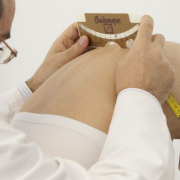ISYQOL: the international version
With a pathology such as scoliosis that requires demanding treatment, at Isico we have known for years how fundamental it is to establish a relationship of trust with the patient and to have him adhere to the therapy, ensuring the possibility of a good quality of life in a brace. For this reason, years ago, a questionnaire was developed where our patients could express their assessment of the impact of wearing a brace on their daily lives.
From these questionnaires, the next step was to develop an online model made available to everyone, where, in ten questions, the patient himself evaluates his own well-being with regard to spinal pathologies (kyphosis, scoliosis, or other).
This is how the ISYQOL (Italian Spine Youth Quality of Life) questionnaire was born, which is based on the concerns expressed by patients and has proven to be particularly appropriate in patients with adolescent idiopathic scoliosis (AIS) who have not been treated surgically.
In recent years, several studies have been published with adaptations and validations of the original Italian version in different languages.
The latest revision is an international version published recently in the European Journal of Physical and Rehabilitation Medicine, a “Cross-cultural Validation of the Questionnaire: The ISYQOL International”.
The ISYQOL Italian version was translated into six languages using the forward-backwards procedure. The conceptual equivalence of the items’ content was verified, and any inconsistency was resolved by consensus. Finally, patients were asked to complete the ISYQOL before their consultation or treatment session without external help and without being influenced by their parents.
This work aims to assess the ability of ISYQOL to provide an accurate, cross-culturally equivalent measure of the quality of life for young people with idiopathic scoliosis from seven different cultures and languages (i.e. Canadian English, Canadian French, Greek, Italian, Polish, Spanish, and Turkish).
After this last revision, the questionnaire is now available in many languages. In addition to Italian and English, we have Chinese, Polish, Korean, Arabic, Persian, French, Spanish, and Greek versions.

